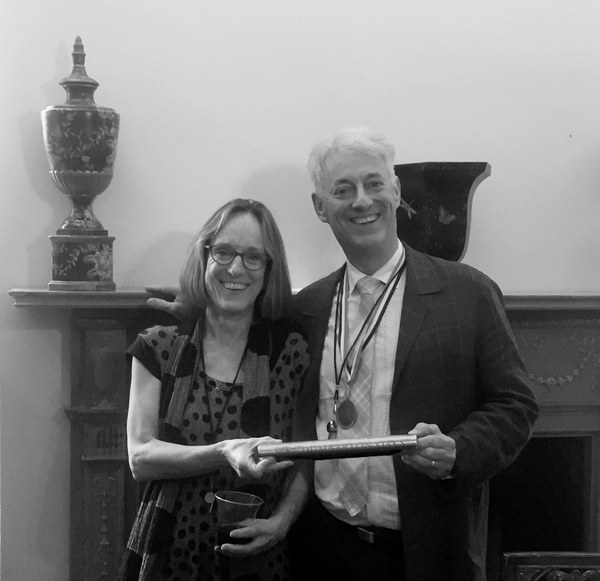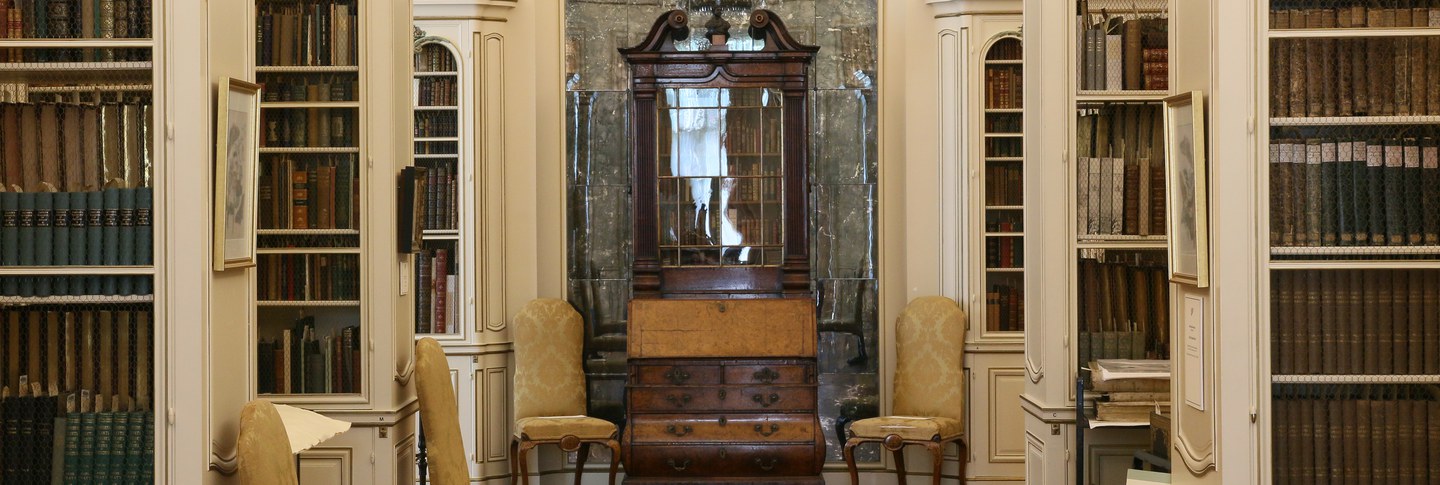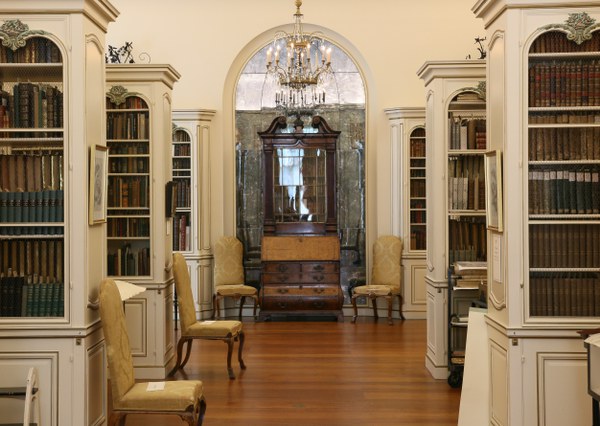This essay is the second part of a two-part series on the history of the Garden and Landscape Studies program. Read part one.
By Jane Padelford
The early 1990s was a period of transition for the GLS program, in which the scholarship of fellows increasingly represented a broader geographical spread beyond Europe and North America. The program, which had traditionally taken an art historical approach and was very much grounded in the European world, looking at the Renaissance, ancient Rome, and antiquity, began accepting fellows from—and focusing on—China, Japan, Australia, India, Pakistan, the Middle East, and Turkey.
Joachim Wolschke-Bulmahn, a landscape architect and professor from Leibniz University in Hanover, who was director of studies in Landscape Architecture from 1991 to 1996, brought new approaches through his studies in ideology, geography, sociology, and history. The scope of the program expanded from garden studies that focused on historical studies of individual gardens to landscape studies considering the dilemmas of contemporary society and the search for meaning and form in landscape design.Joachim Wolschke-Bulmahn, Angeliki E. Laiou, and Michel Conan, Twenty-Five Years of Studies in Landscape Architecture at Dumbarton Oaks: From Italian Gardens to Theme Parks (Washington, DC: Dumbarton Oaks, 1996). Significant volumes that resulted from symposia during his tenure include Nature and Ideology: Nature and Garden Design in the Twentieth Century (1997) and Places of Commemoration (2001), which grappled with issues of defining memories, social symbols, and local identity, including cemeterie and sites of former Nazi concentration camps. Terence Young was acting director of Studies in Landscape Architecture from 1996 to 1997 and led the symposium and publication of Theme Park Landscapes (2002), which explored how theme parks serve as a metaphor for postmodern urban life as it is directed toward consumption.
Michel Conan, who was educated as a sociologist, served as director of Studies in Landscape Architecture from 1998 to 2008, sought to engage questions of how gardens, landscapes, and plants influenced cultural changes throughout history. He utilized the influences of sociology and anthropology that, as former Senior Fellow Mark Laird has noted, dramatically changed the direction and complexion of landscape studies. Volumes published during this period included: Bourgeois and Aristocratic Cultural Encounters in Garden Art, 1550–1850 (2002); Landscape Design and the Experience of Motion (2003); Baroque Garden Cultures: Emulation, Sublimation, Subversion (2005); Performance and Appropriation: Profane Rituals in Gardens and Landscapes (2007); and Sacred Gardens and Landscapes: Ritual and Agency (2007).
Conan worked with scholars including D. Fairchild Ruggles and James Westcott to produce Middle East Garden Traditions: Unity and Diversity (2008) and fostered the development of the Middle East Garden Traditions digital research tool with selected catalogues, glossaries, and bibliographies on Umayyad, Abbasid, Andalusian, Ottoman, Mughal, North African, and Safavid gardens from the eighth century to the present. Conan strengthened connections with the Smithsonian, Center for Advanced Study in the Visual Arts at the National Gallery of Art, and the Huntington Library, leading to publications such as Botanical Progress, Horticultural Innovation and Cultural Change, coedited by John Kress, and the 2008 symposium “Gardens and Imagination,” cosponsored with the Huntington. The GLS project grants supported a number of garden archaeologists with projects in Rome, Mexico, and prehistoric New Zealand.
In 2008, the name of the program changed from Studies in Landscape Architecture to Garden and Landscape Studies. This made the title consistent with the other scholarly programs—Pre-Columbian Studies and Byzantine Studies—and also encompassed garden history, an important subject within the program. The same year, John Beardsley was appointed director of Garden and Landscape Studies. As an art historian, curator, writer, and lecturer at the Harvard Graduate School of Design, he brought a closer collaboration between landscape historians and practitioners. Volumes published under Beardsley’s leadership included Landscape Body Dwelling: Charles Simonds at Dumbarton Oaks; the proceedings of the 2010 symposium, Designing Wildlife Habitats; and the proceedings of the 2013 symposium, Cultural Landscape Heritage in Sub-Saharan Africa.
In conjunction with the symposium “Designing Wildlife Habitats,” the garden staff and I, as GLS program coordinator, designed the native aquatic habitat in the Ellipse, which developed into a functioning ecosystem and contributed to our goal for greater biodiversity in the gardens. Beardsley welcomed senior fellows to organize symposia including Dorothée Imbert’s “Food and the City” (2015), Thaïsa Way’s “River Cities, City Rivers” (2018), Georges Farhat’s “Landscapes of Preindustrial Urbanism” (2020), and Sonja Dümpelmann’s “Landscapes of Sport” (2022), as well as volumes edited with staff: Michael Lee and Kenneth Helphand’s Technology and the Garden (2014) and Anatole Tchikine and John Davis’s Military Landscapes (2021). Beardsley initiated the Ex Horto series to facilitate the translation of classic works on the philosophy, art, and techniques of landscape and garden design and includes such volumes as The Dumbarton Oaks Anthology of Chinese Garden Literature (2020), the first comprehensive collection in English of over two millennia of Chinese writing about gardens and landscape.
Beyond the traditional academic symposia and publications, Beardsley also introduced several new approaches the landscape and the study of landscapes. He inaugurated the contemporary art installation program that invited artists such as Patrick Dougherty, Cao | Perrot Studio, Hugh Livingston, and Martha Jackson Jarvis to exhibit their work in the Dumbarton Oaks Gardens. Beardsley revived a summer internship program for landscape architecture students that had existed between the mid-1950s and the early 1970s. Students worked half-time in the gardens, learning planting design, maintenance, and historic garden conservation, and the rest of their time was spent on research projects.
Beardsley was awarded a grant from the Andrew W. Mellon Foundation (2014 to 2019) to foster a program in Urban Landscape Studies to consider the historical role of landscape and design in the urban fabric, from pre-industrial cities to river cities to the impacts of climate change on future cities. The Mellon initiative had three primary components: semester-long research fellowships for scholars and practitioners; a series of academic events, including the Mellon Midday Dialogues; and a series of public programs including lectures, colloquia, workshops, and publications, all aimed at disseminating the initiative’s work nationally and internationally. In collaboration with Anatole Tchikine, Beardsley also initiated the Garden and Landscape Studies Summer Workshop, a three-week workshop aimed at PhD and MLA candidates, to develop the field of garden and landscape studies across distinct and related disciplines and to promote the depth and breadth of future landscape scholarship. A number of the alumni of this workshop were later awarded junior fellowships at Dumbarton Oaks.

Thaïsa Way, a landscape historian and professor at the University of Washington who has published on feminist histories of landscape architecture and public space in cities, has been director of Garden and Landscape Studies since 2019 and continues the work of expanding and updating the program’s scope. In honor of the centennial of the Dumbarton Oaks Gardens, Way invited scholars to contribute to the forthcoming book Garden as Art: Beatrix Farrand at Dumbarton Oaks (2022). She also worked with Jonathan Kavalier, director of gardens and grounds, to produce an updated edition of Beatrix Farrand’s Plant Book (May 2022). Way’s forthcoming symposia volumes include Segregation and Resistance in America’s Urban Landscapes edited by Dr. Way and Eric Avila and Land Back: Indigenous Landscapes of Resurgence and Freedom edited by Michelle Daigle and Heather Dorries.
Way was awarded the program’s second grant by the Mellon Foundation to expand the initiative in Urban Landscape Studies with a focus on “Democracy and the Urban Landscape: Race, Identity, and Difference.” The initiative fosters an understanding of cities as landscapes by inviting engagement with such topics as topography, hydrology, climate, and urban form; landscape and public history; the urban/rural interface; racialized and gendered landscapes; political ecologies; and informal urbanism. Colloquia and talks organized by Way include “Interpreting Landscapes of Enslavement,” which brought together scholars and curators from Montpelier, Monticello, and Georgetown University; and public lectures by Christine DeLucia on “Memoryscapes of King Philip’s War: Revisiting Indigenous and Colonial Places, Histories, and Legacies,” and A. K. Sandoval-Strausz on “Barrio America: How Latino Immigrants Saved the American City.” Way organized a study day, “Teaching Urban Landscape History and Democracy,” that brought together scholars and high school teachers to explore how to use Dumbarton Oaks’ rare books and drawings collection in teaching high school history through a democracy and landscape lens.
Way is partnering with a new advisory board to expand the Ex Horto series to include works of Indigenous communities with the first project being a beautiful work by Tinglit scholars as well as texts from a broader geography to include West and Southeast Asia and the African continent. Way has expanded the reach of the Garden and Landscape Studies program by leveraging technology, especially during the COVID-19 pandemic as events moved to a virtual format. She collaborated with Director of Pre-Columbian Studies Frauke Sachse on a summer lecture series entitled Hidden Landscapes of the Past: Uncovering the Ancient World through LiDAR that featured archaeologists utilizing remote sensing with lidar (Light Detection and Ranging) to understand ancient landscapes across the Americas as well as in Angkor Wat and Italy. Way has been instrumental in encouraging scholars from a broad array of disciplines and backgrounds to apply for fellowships and in creating a space for conversation both virtually and in-person.
As the program looks forward, we at Dumbarton Oaks understand our responsibility to the discipline of garden and landscape history to steward new and alternative approaches to better understanding our places in the world and the ways that culture and nature shape and are shaped by one another.
Jane Padelford is the program coordinator for Garden and Landscape Studies.

